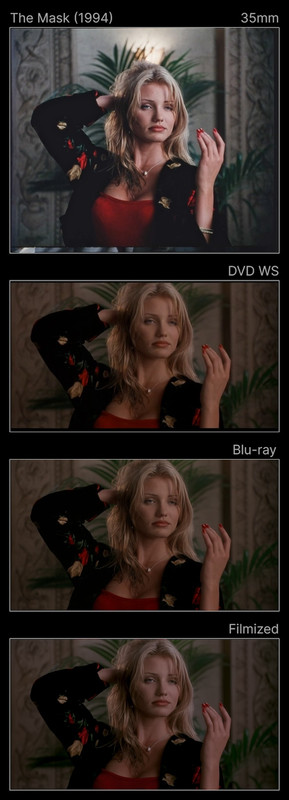TL;DR:
Should we preserve old movies as closely to their original presentation? YES, absolutely!
Should we continue to make movies the same way despite better techniques being available today? NO, if it’s only for the nostalgia and unwillingness to adjust for the technically better.
I think there is still quite some misunderstanding. Taking the risk to essentially repeat myself:
rwzmjl said:
Very much disagree with this sentiment, as a DP myself who shoots film (s16 for the most part).
With what sentiment exactly?
And it’s not noise (which is a digital artifact); it’s grain.
Noise isn’t (only) a “digital” artifact per se as you can have that in the analog realm as well (actually only there, as quantisation noise from numbers manifests only there during the D/A stage), and in fact plenty of it. “Grain” is just a term used in conjunction with film - grain is a variant of noise.
You are also forgetting that filmmakers had plenty of low grain options available to them if they wanted it, pre-digital-revolution.
Throwing artistic decisions together with my purely technical (call it puristic) argument, is missing the point I was trying to make.
And is it the right philosophy when it comes to preservation to scrub supposed artifacts that stem from limitations of the production?
As I stated, it should be left as it is.
No person seriously in favor of film preservation (i.e. not Lucas or Cameron) would opt for that.
Exactly.
Obviously this has nothing to do with shooting a new production. Shoot noiseless footage with an Alexa LF at 60fps if you want; that is no issue (though you might nauseate some audience members).
That is finally halfway picking up the point I was trying to make. I probably would do that with as little grain/noise/whatever as possible as this is what techncially is preferable (and I tend to adjust the aesthetics to that, granted), but at the same time, I would archive everything else with as little post-processing as possible, shall it be as noisy as it wants to be.
In other, concrete words based on an example: the re-releases of Aliens, especially the UHD BD, suck and I way prefer the grainy, halfway unaltered old Blu-ray versions. However, is all that noise technically desirable? No, the same way the noise and crackles on a vinyl record aren’t. Even if one prefers the look or sound, it could artificially be added afterwards while having the advantage of still possessing an original with a higher SNR. Should grain be filtered which - for whatever reason - has already been part of the original recording? No, not at all, as history shows that it isn’t possible without sacrificing part of the original information (and change the artistic intend from that time if you want which I disapprove as well).
Hence in the case of “The Mask”: of course, no filtering please, “let it grain”.
@blakninja: I’m also looking forward a lot to see your release soon.


